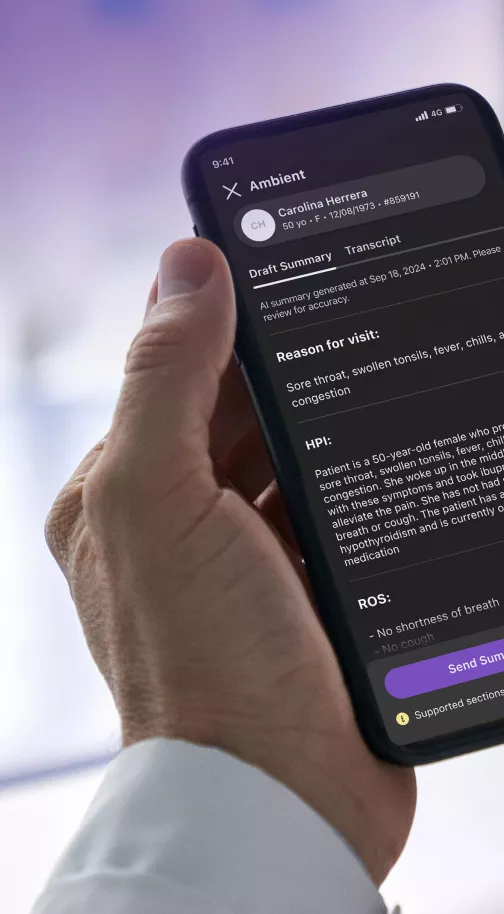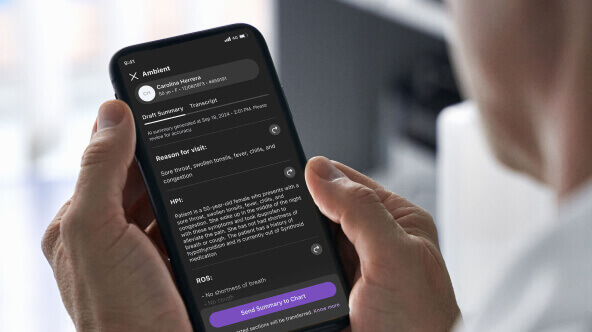Across the athenahealth network and beyond, healthcare organizations are designing and implementing simple interventions with outsized impact on outcomes, satisfaction, and success. Here's another.
The problem
With 150 locations and more than 7,800 physicians, Baylor Scott & White Health needed productive channels of communication, both top-down and bottom-up, across its many chains of command.
The organization was in search of a connected process that could bridge the gap between strategic aims and on-the-ground realities, allowing everyone to tackle challenges as a team.
“We know we don't make the difference in the C-suite — the front-line staff do," says Susan Moats, chief nursing officer for five hospitals in the Texas organization's East region.
How could executives elicit crucial input from staff to drive quality improvement? And on the flip side, how could they distill abstract-seeming priorities into concrete objectives for on-the- ground teams?
The solution
Daily huddles among administrators and clinicians had been a part of operations across Baylor Scott & White Health since 2014. Like many health systems, it uses these short gatherings to bring together staff from across departments to rapidly review the day's safety-related concerns, prevent errors, and put out fires.
Now huddles happen at multiple levels, and they're the key focus of an organization-wide program to drive deep engagement and quality improvement.
Both regularly scheduled and impromptu huddles take shape differently depending on the hospital or site. On the acute care side, a director of acute care huddles with her managers, who are frontline staff with their own daily huddles. The chief nursing officer's daily huddle, for example, includes a representative from every department in the hospital. On top of that is an executive huddle, attended by selected directors.
The tiered structure — with overlapping attendees — allows leadership to rapidly learn about timely concerns from staff, and for staff to use a clear escalation process if an issue isn't getting resolved in a timely fashion. “Everyone knows that the leaders are going to be there to help with their pressing issues," says Moats.
Although escalation is always an option, solutions often come from the huddlers themselves, which also gives staff opportunities to realize self-directed victories. “When everybody gets together to come up with the ideas and solutions, there's more buy-in," says Moats. “That really helps with morale."
At Baylor's Belton, Texas, clinic, physicians huddle with the clinic director once a week. According to Edward Fasolino, M.D., a family medicine physician, “it's a good chance to keep the communication lines open; ideas can go up the chain that way."
The outcome
Fasolino reports that huddle time has helped him do his job more effectively and feel more connected to other teams, to his colleagues, and to patients. Such outcomes help to make the case for other health systems to design environments that increase satisfaction among staff while protecting them from burnout.
Mark Hueter, an operations consultant for the health system, measures employee engagement before and after departments adopt the huddle approach. Engagement was hovering in the low 60th percentile for those not participating, while those huddling had engagement scores in the high 80s.
Martha Seiler, manager of business operations, was part of a multidisciplinary team tasked with getting patients discharged more quickly.
During daily huddles that included nurses and concierge, valet, access, and transport services, the team sorted out a new process. “We were able to get our discharges by 11 a.m. up from 15 percent to 25 percent," Seiler says.
Motivated by their success, the group is now trying to get discharges by noon up 40 percent. “We're almost there. It's huge for not only our staff, but for our patients," Seiler says. “It's satisfaction across the board."
Erin Graham is a frequent contributor to athenaInsight.












